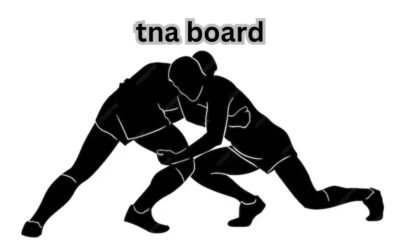INSURANCE
What Is a Mortgage Point? A Comprehensive Guide to Understanding Mortgage Discount Points

When you’re shopping for a home loan, you might come across the term “what is a mortage point” and wonder what they are and whether they make sense for you. It can seem like another confusing financial term in an already complex process, but understanding mortgage points could save you thousands of dollars over the life of your loan.
In this guide, we’ll break down what mortgage points are, how they work, and when it makes sense to use them. By the end of this article, you’ll know everything you need to make an informed decision about whether buying mortgage points is right for you.
What Are Mortgage Points?
Mortgage points, also known as discount points, are essentially a way to “prepay” some of the interest on your home loan in exchange for a lower interest rate. In other words, mortgage points allow you to pay more upfront at closing to reduce your monthly payments over the life of the loan.
One mortgage point typically costs 1% of your total loan amount. So, if you’re taking out a $300,000 mortgage, one point would cost $3,000. Each point you buy will lower your interest rate, generally by around 0.25%. However, the exact reduction varies depending on your lender and the current market conditions.
How Do Mortgage Points Work?
When you buy mortgage points, you’re essentially giving your lender more money upfront in exchange for a lower interest rate. This is often referred to as “what is a mortage point” your interest rate. It’s a trade-off: you pay more now to save later.
For example, let’s say you’re offered a 30-year fixed-rate mortgage at 4%. If you buy one point for $3,000, your interest rate might drop to 3.75%. While this may not sound like a big difference, it can add up over time. Over the life of a 30-year loan, that 0.25% interest reduction could save you thousands of dollars in interest payments.
To better understand how mortgage points work, let’s break it down further:
- Without points: You take out a $300,000 loan with a 4% interest rate. Your monthly principal and interest payment would be about $1,432.
- With 1 point: You buy one point for $3,000, reducing your interest rate to 3.75%. Your new monthly payment would be about $1,389, saving you $43 a month.
That may not seem like a huge amount, but over 30 years, it adds up to $15,480 in savings. And that’s just with one point!
Types of Mortgage Points
There are two main types of mortgage points: discount points and origination points. It’s important to know the difference, as they serve different purposes.
- Discount Points: These are the points we’ve been discussing so far. They allow you to buy down your interest rate and save on the cost of borrowing over time.
- Origination Points: These are fees paid to the lender for processing the loan what is a mortage point. Origination points don’t reduce your interest rate. They are simply a cost of doing business with the lender.
When people talk about mortgage points, they usually mean discount points. Make sure you clarify with your lender which type of points they’re referring to when discussing costs.
Are Mortgage Points Worth It?
Whether buying mortgage points is a good idea depends on a few key factors:
- How long you plan to stay in the home: The longer you stay, the more you benefit from the lower interest rate. If you plan to sell or refinance within a few years, you may not save enough to recoup the upfront cost of buying points.
- Your available cash: Buying points requires extra cash upfront, so you’ll need to consider whether it’s worth tying up that money at closing. what is a mortage point If you’re already stretching your budget to cover the down payment and closing costs, buying points might not be a good idea.
- How much you can lower your rate: The benefit of buying points depends on how much they reduce your interest rate. If the reduction is small, the savings may not justify the cost.
Break-Even Point
A key concept when evaluating mortgage points is the break-even point. This is the amount of time it will take for the monthly savings to equal the cost of the points.
To calculate the break-even point, divide the cost of the points by the amount you save each month. Using our earlier example:
- Cost of points: $3,000
- Monthly savings: $43
- Break-even point: $3,000 ÷ $43 ≈ 70 months (or about 6 years)
In this case, if you plan to stay in your home for more than six years, buying one point makes financial sense. If you’re planning to move before then, what is a mortage point it’s probably not worth it.
How to Calculate Mortgage Point Savings
Calculating the savings from mortgage points requires a few steps:
- Determine the cost of the points: Multiply the loan amount by the number of points you’re buying.
- For example, with a $300,000 loan and one point, the cost is $3,000.
- Calculate the reduction in monthly payments: Find out how much your monthly payments will decrease with the lower interest rate. This information can typically be provided by your lender.
- As mentioned earlier, a $43 monthly reduction in payments on a $300,000 loan for one point is a common scenario.
- Compare the upfront cost with the total savings over time: This helps you decide if buying points is worth it based on your specific financial situation.
Pros and Cons of Buying Mortgage Points
Like any financial decision, there are pros and cons to buying what is a mortage point.
Pros:
- Lower monthly payments: By buying points, you’ll reduce your interest rate and save on monthly payments.
- Significant long-term savings: Over the life of a 30-year loan, even a small reduction in your interest rate can result in thousands of dollars saved.
- Tax deduction: In some cases, the cost of discount points is tax-deductible, but always check with a tax professional.
Cons:
- High upfront cost: Buying points requires additional cash at closing, which can be a burden if you’re already stretching your budget.
- Not beneficial for short-term homeowners: If you plan to sell or refinance within a few years, the upfront cost of points might outweigh the savings.
- Opportunity cost: The money you use to buy points could potentially be invested elsewhere, perhaps offering a better return than the interest savings from mortgage points.
When Should You Buy Mortgage Points?
Buying mortgage points is a good idea if:
- You have extra cash available at closing and won’t need it for other expenses.
- You plan to stay in your home for a long time (at least five to ten years).
- You want to lower your monthly payments and save money on interest over the long term.
On the other hand, it’s probably not worth buying points if:
- You don’t have extra cash at closing.
- You plan to move or refinance in a few years.
- The interest rate reduction is minimal.
Conclusion
Mortgage points can be a powerful tool for lowering your mortgage interest rate and saving money over time. However, they’re not for everyone. By understanding how mortgage points work and carefully weighing the costs and benefits, you can decide if they make sense for your financial situation.
If you have extra cash on hand and plan to stay in your home for the long haul, buying points could be a smart investment. But if you’re short on cash or plan to move soon, it may be better to skip the points and keep your money in your pocket.
FAQs
Can I buy mortgage points after closing?
No, mortgage points must be purchased at the time of closing. Once your loan is finalized, you can’t go back and buy points.
Are mortgage points tax-deductible?
Yes, discount points may be tax-deductible in the year you pay them, but there are rules. You’ll need to itemize deductions on your tax return and meet other IRS requirements. Always consult a tax advisor for specific guidance.
How many mortgage points can I buy?
There’s no set limit, but most lenders allow you to buy up to three or four points. Keep in mind that buying too many points may not be cost-effective.
Can I negotiate mortgage points with my lender?
Yes, in some cases, lenders are open to negotiating. You may be able to get a better deal by shopping around or asking your lender for a discount on points.
Do mortgage points apply to all types of loans?
Yes, you can buy mortgage points for most types of loans, including conventional, FHA, and VA loans. However, the rules and benefits may differ depending on the loan type.
Are mortgage points a good investment?
Mortgage points can be a good investment if you plan to stay in your home for several years and want to lower your interest rate. However, it’s important to calculate the break-even point to determine if it’s the right decision for your situation.
INSURANCE
Understanding Unit 102: A Comprehensive Guide

In various educational and professional contexts, “Unit 102” denotes a specific module or course component. Its content varies across disciplines, but it often introduces foundational concepts essential for advanced learning. This article delves into the significance of unit 102 across different fields, highlighting its objectives, typical content, and its role in building a solid knowledge base.
The Role of Unit 102 in Educational Curricula
Unit 102 serves as a building block in many educational programs, providing students with essential knowledge and skills. It often follows an introductory unit (Unit 101) and precedes more specialized modules. The content of unit 102 varies depending on the discipline but generally aims to deepen understanding and prepare students for more complex topics.
Common Themes in Unit 102 Across Disciplines
While the specifics of Unit 102 differ across fields, several common themes emerge:
- Fundamental Concepts: Unit 102 often covers core principles that are crucial for advanced study. For example, in a British Sign Language course, Unit 102 focuses on conversational skills, enabling learners to engage in basic social interactions.
- Practical Skills: Many Unit 102 modules emphasize hands-on skills. In electrical installation programs, Unit 102 addresses health, safety, and environmental considerations, ensuring that learners can work safely and responsibly.
- Professional Practices: Some Unit 102 units introduce industry standards and professional behaviors. In salon management courses, Unit 102 covers presenting a professional image, teaching students the importance of appearance and conduct in a professional setting.
Examples of Unit 102 in Various Fields
To illustrate the diversity of Unit 102, let’s explore its application in different disciplines:
- British Sign Language (BSL): In BSL courses, Unit 102, titled “Conversational British Sign Language,” focuses on developing both productive and receptive skills. Learners engage in simple exchanges, covering topics like describing people, using numbers, discussing interests, and talking about food and drink. The unit emphasizes correct hand shapes, facial expressions, and BSL structure to ensure effective communication.
- Electrical Installation: In the NVQ 2346-03 Level 3 Electrical Installation Qualification, Unit 102 is dedicated to “Health, Safety and Environmental Considerations.” This unit equips learners with the knowledge to apply health and safety legislation in the workplace, assess work environments for hazards, and implement safe working procedures. It covers topics such as risk assessments, safe use of tools and equipment, and environmental legislation compliance.
- Salon Management: For those pursuing a career in the beauty industry, Unit 102 often focuses on “Presenting a Professional Image in a Salon.” This unit teaches learners how to maintain a professional appearance, communicate effectively with clients, and adhere to salon policies. It covers aspects like personal hygiene, appropriate attire, and professional behavior to ensure a positive client experience.
The Importance of Unit 102 in Skill Development
Unit 102 plays a crucial role in bridging the gap between introductory knowledge and more advanced concepts. By focusing on fundamental skills and professional practices, it prepares learners for the challenges of their chosen field. Successfully completing unit 102 often serves as a prerequisite for more specialized units, underscoring its importance in the learning pathway.
Conclusion
Understanding the role and content of Unit 102 is essential for students and professionals across various disciplines. By providing foundational knowledge and skills, Unit 102 sets the stage for advanced learning and professional development. Whether it’s mastering conversational skills in a new language, adhering to safety standards in technical fields, or presenting a professional image in client-facing roles, Unit 102 equips learners with the tools they need to succeed.
FAQs
What is Unit 102?
Unit 102 is a foundational module in many educational and vocational programs, focusing on essential concepts and skills specific to a field of study.
What topics does Unit 102 cover?
The topics vary by discipline but often include core principles, practical skills, and professional practices, such as safety standards, communication skills, or professional image presentation.
Why is Unit 102 important?
It bridges the gap between introductory and advanced concepts, helping learners build a solid foundation for further study or professional development.
Can I take Unit 102 without completing Unit 101?
Typically, Unit 101 is a prerequisite as it introduces basic concepts needed to succeed in Unit 102.
How is Unit 102 assessed?
Assessment methods vary but may include practical demonstrations, written exams, or coursework designed to test both theoretical knowledge and applied skills.
INSURANCE
Understanding Oil Transfer Pumps: A Comprehensive Guide

Oil transfer pump are essential tools in various industries, facilitating the efficient movement of oil and other fluids from one container to another. Whether you’re in the automotive sector, industrial manufacturing, or agriculture, understanding the types, applications, and maintenance of these pumps is crucial. This guide delves into the intricacies of oil transfer pumps, offering insights to help you make informed decisions.
What is an Oil Transfer Pump?
An oil transfer pump is a device designed to move oil from one location to another. These pumps are vital in scenarios where manual transfer would be inefficient or impractical. They come in various designs and capacities, tailored to specific applications and fluid types.
Types of Oil Transfer Pumps
- Manual Pumps: Operated by hand, these are suitable for small-scale operations where precision and control are paramount. They are cost-effective and easy to use but may not be ideal for transferring large volumes.
- Electric Pumps: Powered by electricity, these pumps are efficient and capable of handling larger volumes. They are commonly used in industrial settings where speed and volume are critical.
- Pneumatic Pumps: Utilizing compressed air, pneumatic pumps are ideal in environments where electrical power sources are unavailable or pose a risk. They are often used in hazardous areas due to their safety features.
- Hydraulic Pumps: These pumps use hydraulic power to transfer oil, offering high pressure and flow rates. They are suitable for heavy-duty applications requiring robust performance.
Applications of Oil Transfer Pumps
- Automotive Industry: Used for transferring engine oils, lubricants, and other fluids during maintenance and manufacturing processes.
- Industrial Manufacturing: Essential for moving oils and lubricants in machinery, ensuring smooth operations and reducing downtime.
- Agriculture: Employed in transferring oils for machinery maintenance, ensuring equipment longevity and efficiency.
- Marine: Vital for transferring fuel oils and lubricants in ships and boats, maintaining operational readiness.
Key Features to Consider
When selecting an oil transfer pump, consider the following features:
- Flow Rate: Determines how quickly the pump can transfer oil. Higher flow rates are suitable for large volumes, while lower rates offer precision.
- Viscosity Compatibility: Ensure the pump can handle the viscosity of the oil you intend to transfer.
- Material Construction: Pumps should be made from materials compatible with the oil type to prevent corrosion and degradation.
- Power Source: Choose between manual, electric, pneumatic, or hydraulic based on your operational needs and available resources.
Maintenance and Safety Tips
- Regular Inspection: Periodically check for wear and tear, leaks, and other signs of damage.
- Proper Cleaning: After use, clean the pump to prevent contamination and ensure longevity.
- Follow Manufacturer Guidelines: Adhere to the manufacturer’s instructions for operation and maintenance to ensure safety and efficiency.
- Use Appropriate Personal Protective Equipment (PPE): Always wear suitable PPE to protect against potential hazards during operation.
Conclusion
Oil transfer pumps are indispensable tools across various industries, offering efficient and safe fluid transfer solutions. By understanding the different types, applications, and maintenance practices, you can select the right pump for your needs and ensure its optimal performance over time.
FAQs
What types of oil transfer pumps are available?
There are manual, electric, pneumatic, and hydraulic oil transfer pumps. Each type is suited to specific applications and operational needs.
How do I choose the right oil transfer pump?
Consider factors such as the type of oil, flow rate, viscosity, pump material, and available power sources when selecting a pump.
Are oil transfer pumps safe to use?
Yes, when used according to manufacturer guidelines. Always inspect the pump before use and wear appropriate personal protective equipment (PPE).
How do I maintain an oil transfer pump?
Regularly inspect the pump for wear, clean it after use, and follow the manufacturer’s maintenance recommendations to ensure longevity and efficiency.
INSURANCE
Unlocking Your Future: How to Earn a Free Master’s Degree Online


 CRYPTO3 months ago
CRYPTO3 months agoCrypto-Engine.Pro Blog: Your Go-To Source for Crypto Trading Insights

 GENERAL3 weeks ago
GENERAL3 weeks agoUnderstanding TNA Board: A Comprehensive Guide for Beginners

 GENERAL4 months ago
GENERAL4 months agoEverything You Need to Know About NSFW411: The Ultimate Guide

 ENTERTAINMENT4 months ago
ENTERTAINMENT4 months agoExploring Mywape: Your Guide to Quality Vaping

 FOOD5 months ago
FOOD5 months agoExploring the Benefits of süberlig: A Comprehensive Guide

 BLOG4 months ago
BLOG4 months agoDiscover the Secrets Behind the /vital-mag.net blog: A Closer Look at the Popular Blog

 FOOD5 months ago
FOOD5 months agoUnveiling the Beauty of Tamisie: A Guide to this Exquisite Fabric

 INSURANCE3 months ago
INSURANCE3 months agoUltimate Guide to Debt Consolidation: How It Works and Why You Should Consider It





















